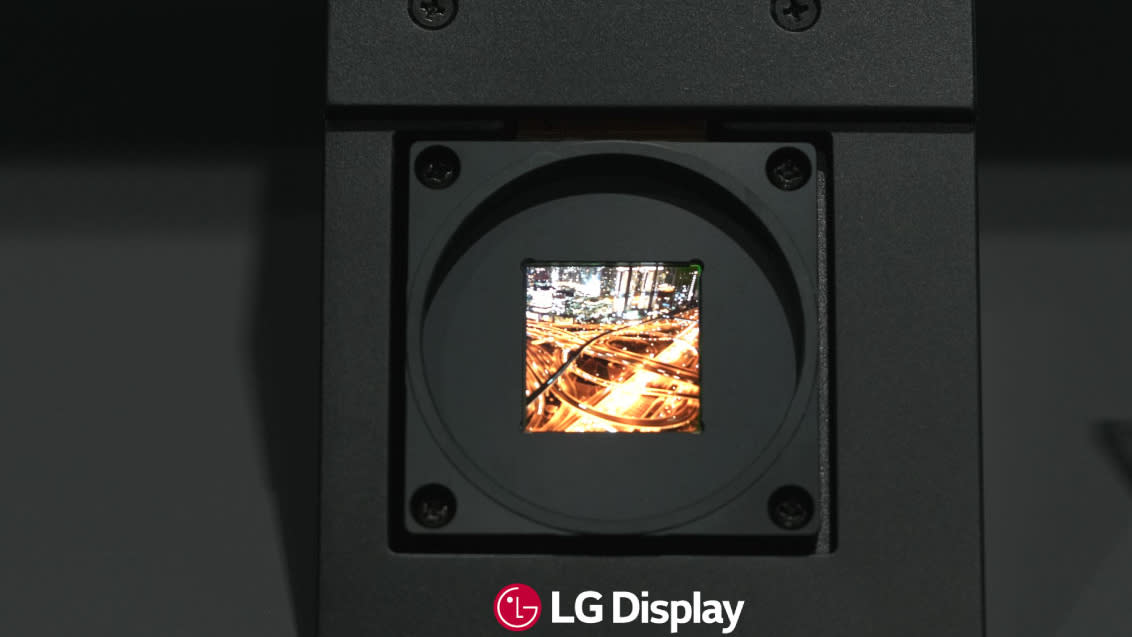LG Display unveils super bright OLED technology that could shape the future of TVs

LG Display has announced a handful of new OLED developments at SID Display Week 2024 in San Jose, California. These include OLED panels that can go extremely bright as well as ultra-responsive displays with jaw-dropping refresh rates.
It's using this technology to pioneer its OLEDoS for VR system, meaning we likely won't see it come to any TVs for quite some time – however, these new OLED panels could open up a world of possibilities further down the line. LG says that they're only about the size of a coin currently, however, they're reportedly capable of hitting an eye-searing 10,000 nits. To put that into perspective, the latest TV we've seen with that brightness figure quoted was the Hisense 110UX, which is practically as bright as Mini LED has ever gone. Other OLED sets on the market seem to hit a maximum of 3000 nits, and they are leveraging either Micro Lens Array (MLA) or QD-OLED panel technology.
Speaking of MLA, LG has implemented its display technology into these pocket-sized OLED panels, which is likely how it's achieved such a high brightness. MLA is in its second generation currently with the LG G4, Panasonic Z95A and Philips OLED909 all poised to include the enhanced technology soon – but all we're thinking about is the third generation after hearing about this development in MLA OLED technology. Unfortunately, this tech is destined for VR and AR headsets for now, as well as smartwatches.
Thankfully, TVs did get a nod, with LG Display showcasing an 83-inch OLED TV (presumably the G4) and OLED gaming displays. Both units were outfitted with LG Display's META Technology 2.0, which combines the power of META Multi-Booster and Detail Enhancer algorithms with Micro Lens Array display tech. Interestingly, LG name drops "MLA+" with 42.4 billion micro lenses quoted – we assume this is LG's term for second-generation MLA OLED rather than a wild new development in the world of TVs. LG Display also quotes a 3000 nit brightness figure for these displays, which it attributes to the META Technology 2.0 system.
If you're a hardcore gamer who's more concerned with response times and fluidity than brightness, then LG also has a wickedly fast 27-inch QHD OLED gaming monitor on show. While it's a step down in resolution and doesn't feature MLA, it can reach a blazingly fast 480Hz refresh rate – making it the first OLED panel of its kind. We doubt that this feature will come to TVs any time soon (after all, the mainstream consoles are capped at 120Hz currently), however, we're seeing more and more TVs with 144Hz refresh rate support by the day.
Last but certainly not least is LG's automotive displays – we know what you're thinking, but hear us out. While these aren't strictly AV-dedicated screens, they do use a fascinating OLED assembly that we've recently seen in another high-profile product. Tandem OLED, a technology that stacks two OLED layers to increase brightness and durability, will feature on LG Display's new automotive screens. Interestingly, Apple launched its OLED iPad Pro model last week which also uses this screen technology, so we expect to see it in many more products moving forward. However, despite Apple appearing to take a large chunk of credit for developing this display assembly, LG Display reveals that it's actually been around since 2019... awkward.
Whether or not we'll see these breakthrough OLED panels come to TVs is unknown, but we would certainly welcome these super bright and responsive displays in bigger sizes.
MORE:
Check out our picks for the best OLED TVs
And the best OLED TV deals

